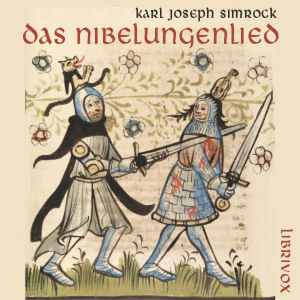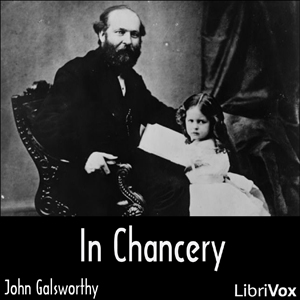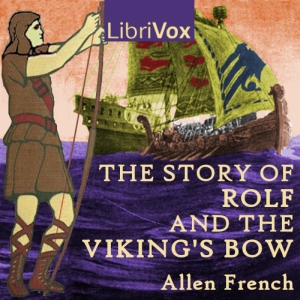'The Forsyte Saga' is the story of a wealthy London family stretching from the eighteen-eighties until the nineteen-twenties. In Chancery is the second book in the saga. Five years have passed since Irene left Soames and the death of Bosinney. Old Jolyon meets Irene and is enchanted by her. At his death he leaves her a legacy sufficient for her to live an independent life in Paris.
Soames who is desperate for a son, attempts to effect a rapprochement but is rejected by her. Meanwhile Young Jolyon, now a widower,who is Irene’s trustee falls in love with her.
Soames suspects Young Jolyon and Irene of adultery and sues for divorce. His action is successful. Young Jolyon and Irene marry. She bears him a son, John. Soames remarries. His wife Annette bears him a daughter, Fleur. (Summary by Andy Minter)
46 episodes

The Tale of Genji (Genji Monogatari) is a classic work of Japanese literature attributed to the Japanese noblewoman Murasaki Shikibu in the early eleventh century, around the peak of the Heian Period. It is sometimes called the world's first novel, the first modern novel, the first romance novel, or the first novel to still be considered a classic... The Genji was written for the women of the aristocracy (the yokibito) and has many elements found in a modern novel: a central character and a very large number of major and minor characters, well-developed characterization of all the major players, a sequence of events happening over a period of time covering the central character's lifetime and beyond. The work does not make use of a plot; instead, much as in real life, events just happen and characters evolve simply by growing older. One remarkable feature of the Genji, and of Murasaki's skill, is its internal consistency, despite a dramatis personae of some four hundred characters. For instance, all characters age in step and all the family and feudal relationships are consistent among all chapters. NOTE: this is a highly condensed version of the text, running to just under 200 pages, whereas the original is nearly 1000 pages long! (Summary by Wikipedia)
22 episodes

Das Nibelungenlied ist ein mittelalterliches Heldenepos und wurde oft als „Nationalepos der Deutschen“ bezeichnet. Es entstand zu Beginn des 13. Jahrhunderts und wurde in der damaligen Volkssprache Mittelhochdeutsch geschrieben.
Das Epos erzählt von der Liebe zwischen dem Drachentöter Siegfried und der burgundischen Prinzessin Kriemhild, von der Brautwerbung des burgundischen Königs Gunther um die isländische Königin Brunhild, vom Verrat der Burgunden an Siegfried und dessen Ermordung durch Hagen. Später ist der Schauplatz der Handlung das Land der Hunnen unter König Etzel, den Kriemhild in zweiter Ehe geheiratet hat. Kriemhild benutzt ihre neue Position, um mithilfe der Hunnen Siegfrieds Tod an Hagen und allen Burgunden zu rächen.
Die Übersetzung Karl Joseph Simrocks gehört zu den bekanntesten Übertragungen des alten Textes in die neuhochdeutsche Sprache.
The Nibelungenlied (Song of the Nibelungs) is a medieval epic poem and has been often referred to as the German “national epic”. It was written down in the early 13th century in Middle High German, the vernacular of the time.
The epic tells of the love between the dragon-slayer Siegfried and the Burgundian princess Kriemhild, how Gunther, King of Burgundy, courts Brunhild of Iceland, and how Siegfried is betrayed by the Burgundians and murdered by Hagen. The scene of the story later shifts to the land of the Huns of King Etzel, Kriemhild’s husband in second marriage. Kriemhild uses her new position among the Huns to avenge Siegfried’s death on Hagen and all the Burgundians.
The translation of Karl Joseph Simrock is one of the best-known New German versions of the old text. (Summary by Al-Kadi)
39 episodes

Amadis of Gaul (Amadís de Gaula, in Spanish) was not the first, but certainly one of the best known knight-errantry tales of the 16th century. Not only is its authorship doubtful, but even the language in which it was first written - Portuguese or Spanish. It is imagined to have been composed in the 14th century, but the known first printed edition came to light in Zaragoza in 1508, and the oldest extant version is in Spanish.
The plot is the story of the brave knight Amadis, and starts with the forbidden love of his parents and his secret birth, followed by his abandonment near water. He is found and raised as the son of a knight. Upon reaching adulthood, he goes in a quest for his own identity, and investigates his origins through fantastic adventures: plenty of wizards, princesses, damsels in distress and other knights people the world of Amadis.
Amadis of Gaul, together with Palmerin of England and Tirante the White, are the only books saved from the fire by Quixote's curate, when purging the knight's library: Tirante, for its quaintness; Palmerin, because he thought it had been written by the king himself; and Amadis, for being the best of its kind. Even if Cervante's praise works more as censure, it's a fact that Amadis represents the style as no other, and was the father of a numerous flock, becoming a landmark work among the knight-errantry tales and marking the story of European literature. (Summary by Leni)
Dedicated Proof-Listeners: Miss Stav, Becky Cook, & Rapunzelina
62 episodes
Rolf, a youth in early Christian Iceland, loses first his father, then his property, and finally his freedom to the schemes of a greedy neighbor. Outlawed from Iceland, Rolf travels abroad, meeting with shipwreck, enslavement, Viking berserkers, and many other dangers and adventures. All the while, Rolf searches for a way to prove his father was killed unjustly and win back his own property and freedom. Even more difficult, Rolf must end the cycle of enmity, vengeance, and pride that hangs like a curse over his family. - Summary by Erin Schellhase
31 episodes

The Kalevala is a 19th-century work of epic poetry compiled by Elias Lönnrot from Karelian and Finnish oral folklore and mythology. It is regarded as the national epic of Karelia and Finland and is one of the most significant works of Finnish literature. The Kalevala played an instrumental role in the development of the Finnish national identity, the intensification of Finland's language strife and the growing sense of nationality that ultimately led to Finland's independence from Russia in 1917. The first version of The Kalevala (called The Old Kalevala) was published in 1835. The version most commonly known today was first published in 1849 and consists of 22,795 verses, divided into fifty songs. The title can be interpreted as "The Land of Kaleva" or "Kalevia." If the rhythm of the poetry sounds familiar to American readers, it is probably because Henry Wadsworth Longfellow borrowed its trochaic tetrameter form for his famous "Song of Hiawatha." Of the five complete translations of the Kalevala into English, it is only the older translations by John Martin Crawford (1888) and William Forsell Kirby (1907) which attempt strictly to follow the original rhythm (Kalevala meter) of the poems. Modern writers influenced by the Kalevala include J. R. R. Tolkien, whose epic "Lord of the Rings" trilogy make use of both style and content from the Finnish work. - Summary by Wikipedia (edited and supplemented by Expatriate)
50 episodes
Art or politics, this is the question Nick Dormer dealls with in the course of this novel. Mirian Ruth, an aspiring actress, is the "tragic muse" of the title. Her concerns are a bit different: would proper society accept her as an actress, or would she have to choose between giving up acting and marrying well? A large and interesting cast of secondary characters accompany them along the way, for good or bad. This novel is for lovers of Trollope and Dickins, while James's sharp and keen observations and wit are there at all times. Enjoy a stroll in the park listening to this overlooked masterpiece.
. - Summary by Stav Nisser
52 episodes
En el Cantar de los nibelungos se narra la gesta de Sigfrido, un cazador de dragones de la corte de los burgundios, quien valiéndose de ciertos artificios consigue la mano de la princesa Crimilda. Sin embargo, una indiscreción termina por provocar una horrorosa cadena de venganzas. Summary by Phileas Fogg.
40 episodes
"Policy and Passion, a Novel of Australian Life" tells the story about a father and daughter, torn between the policy of the country in which they live and the passions both have. The father, Thomas, is a rising politician until his love for a married woman changes the game while the daughter, Honora, falls in love with an English nobleman. But this is not only a love story. This novel tells about the early days of Australia, and tells the story of a whole community. It receives scholarly attention as a work about colonialism. - Summary by Stav Nisser
44 episodes
Los Eddas son colecciones de historias relacionadas con la mitología nórdica. Con este nombre se conocen dos recopilaciones literarias islandesas medievales que juntas forman el corpus más importante para conocer la mitología nórdica. - Summary by Phileas Fogg
45 episodes
Cañas y barro relata la historia de una de las familias más importantes de La Abufera valenciana.
Generación tras generación se han ganado el prestigio pescando y siendo los mejores barqueros del Palmar. Sin embargo, Tono, hijo del tío Paloma, decide abandonar la pesca y dedicarse a labrar los campos, lo que a consecuencia del fuerte carácter del tío Paloma, se traduce en una gran enemistad entre padre e hijo.
Por otro lado, Tonet hijo de Tono y nieto del tío Paloma, es un muchacho débil de carácter al que le gusta la vida fácil; esto unido a la relación amorosa con Neleta, su amor de la infancia, pero ya casada con Cañamel, conducirá a la familia al total desprestigio. Resumen de Montse González.
12 episodes

First published in 1893, this novel came to question many subjects which were considered taboo. Through a few interconnected plots and sub plots, the story examines the role of women and the different opportunities women and men had. Through the twins of the title, a girl and a boy, and through two other ladies we discover the Victorian world in a different light. What does a woman have to do if, after marriage, she discovers very unsettling things about her husband's past? Yes, society expects her to stay with him and honor the marriage. But what if she is not willing? What are women expected to do when trapped in loveless marriages? The book also examine in many ways the idea that women are not inferior to men and should receive the same education, information about life, and preparation for the real world. This book received much academic attention. It is a must read for all feminist fiction admirers, history lovers, and many more from every field. It tells about Victorian society as it really was. - Summary by Stav Nisser.
96 episodes
This is the second of three volumes of The Mabinogion, a collection of some of the earliest tales from the British Isles. Lady Charlotte Guest translated the stories in Volume 2 from a 14th-century Welsh manuscript, The Red Book of Hergest. These stories include the earliest written reference to the legendary King Arthur. - Summary by JoLynne Walz Martinez
8 episodes
One dark winter's day in the north of Finland, Father Mikko seeks shelter in an isolated cabin till a storm abates. After dinner the family sit around the fire, and the daughter asks him to tell them "all the stories he had ever heard from the very beginning of the world all the way down", and so the book begins. In the words of the author "If this little volume may in any degree awake some interest in the Finnish people its author will be amply satisfied, and its end will have been attained." ( Annise)
38 episodes

Iceland is the home of the Saga, a form of literature which includes the telling of the story of a hero’s life and adventures in a fixed, regular form, and which is usually intended for recitation, though the Saga is never set in the customary versified style of poetry. A large number of these Sagas, relating to Iceland, Greenland, North America, and the Norse countries, still remain, and among them the Frithiof Saga, narrating the stirring adventures of that hero of the Northland and Viking of its seas, is one of the most beautiful. Its subject is noble, heroic, and free from exaggerated description or overwrought sentiment. Frithiof is a splendid type of the old Norse hero, invincible in battle upon the land, fearless of Nature’s wrath as he sails the seas in his dragon ship, impulsive yet just, swift in punishment yet quick in forgiveness. The central motives of the Saga are his love for King Bele’s daughter, Ingeborg; the refusal of her brothers to sanction their marriage because the hero is not of royal birth; her unwilling marriage to the old King Ring; Frithiof’s exile, and his final union with Ingeborg after the death of her husband and reconciliation with her brother. Interwoven with the narrative itself, which is full of dramatic situations, are some of the old myths, than which none is more beautiful than the death of the gentle god Balder. The very breath of the North sweeps through the stately story which the German author has told with so much skill. Those who wish to come in closer contact with the Saga itself can do so by consulting Bishop Tegner’s masterly translation. - Summary by George Upton
21 episodes
This volume contains the principal hero-lays of the six great epic cycles of the Teutonic Middle Ages: The Langobardian Legends, the Amelung and Kindred Legends; Dietrich of Bern's Adventures; the Nibelung Legends; the Hegeling Legends; and Beowulf. To them, the author has added the great mythical Carolingian cycle, which centred round the persons of Charlemagne and his heroes, and the Breton ones of King Arthur and his Knights of the Round Table, as well as the legend of the Holy Grail. Therefore, this one book tells all of the great epic and romances of the Middle Ages in accessible language for the general public. (Summary by Leni)
44 episodes
Taulat de Rugimon arrives at the court of King Arthur and stabs one of Arthur's knights. Jaufry, a young and ambitious knight, sets off in pursuit to avenge the insult to Arthur's court. After a series of bizarre adventures, Jaufry catches up with Taulat and wins the fair Brunissende. Originally an anonymous medieval verse romance, written in Occitan, Alfred Elwes's 1857 English version is a translation of Jean-Bernard Mary-Lafon's French translation, which was published in the previous year. Jaufry was reprinted in the 1970s as the 21st volume in the prestigious Newcastle Forgotten Fantasy Library. - Summary by Phil Benson
12 episodes
„Im Nest der Zaunkönige liegt der Hauptteil des Herrenbesitzes um die Drei Gleichen, Vorberge des Thüringer Waldes bis in die Nähe von Erfurt, in einem Landstrich, wo die Dorfnamen, welche auf ‚leben‘ endigen, vorherrschen.“[4] Der Hauptsitz der Familie, die nun den spöttischen Beinamen „Reguli“, „kleine Könige“ bzw. „Zaunkönige“ trägt, wird mit Ingersleben (hier „Ingramsleben“ genannt) bei Erfurt identifiziert.
Die Erzählung setzt im Jahre 1003 auf dem Höhepunkt der Konsolidierungskämpfe Kaiser Heinrichs II. in der Abtei Hersfeld ein, deren Konvent und Abt selbst in der Nachfolgefrage verstritten sind. Dem für den Kirchendienst bestimmten Immo, der hier seine schulische Ausbildung erfährt, gelingt die Flucht aus dem Konvent, um in der Folgezeit auf kaiserlicher Seite in der Auseinandersetzung teilzunehmen
20 episodes

















